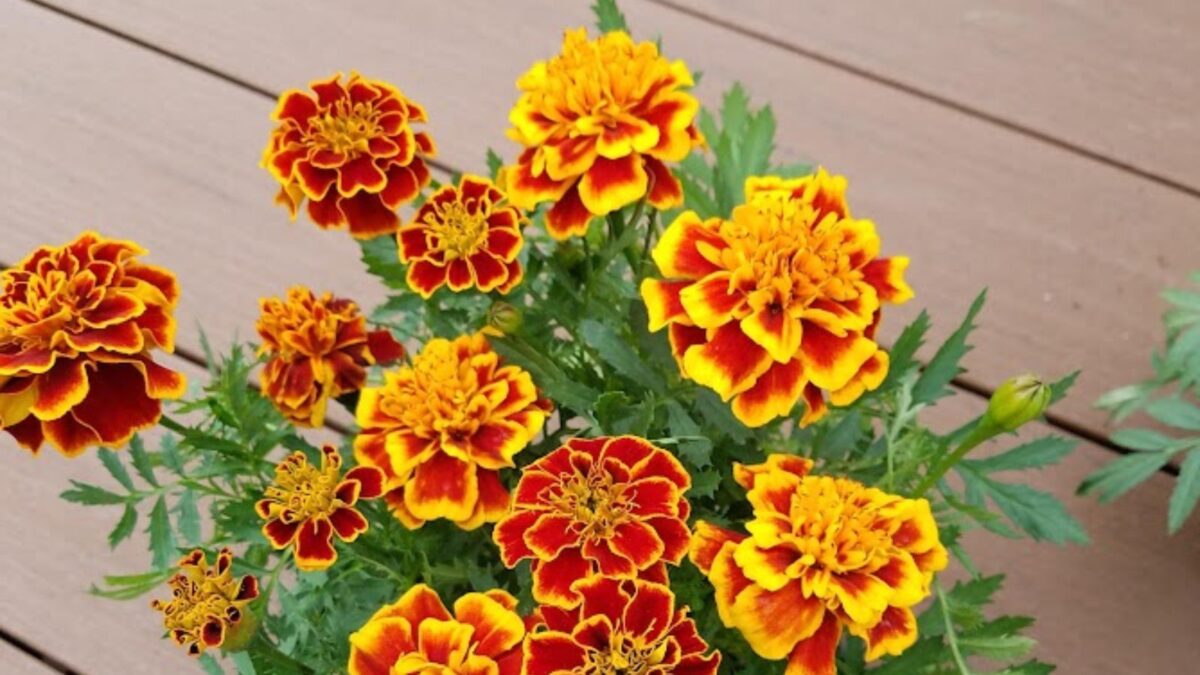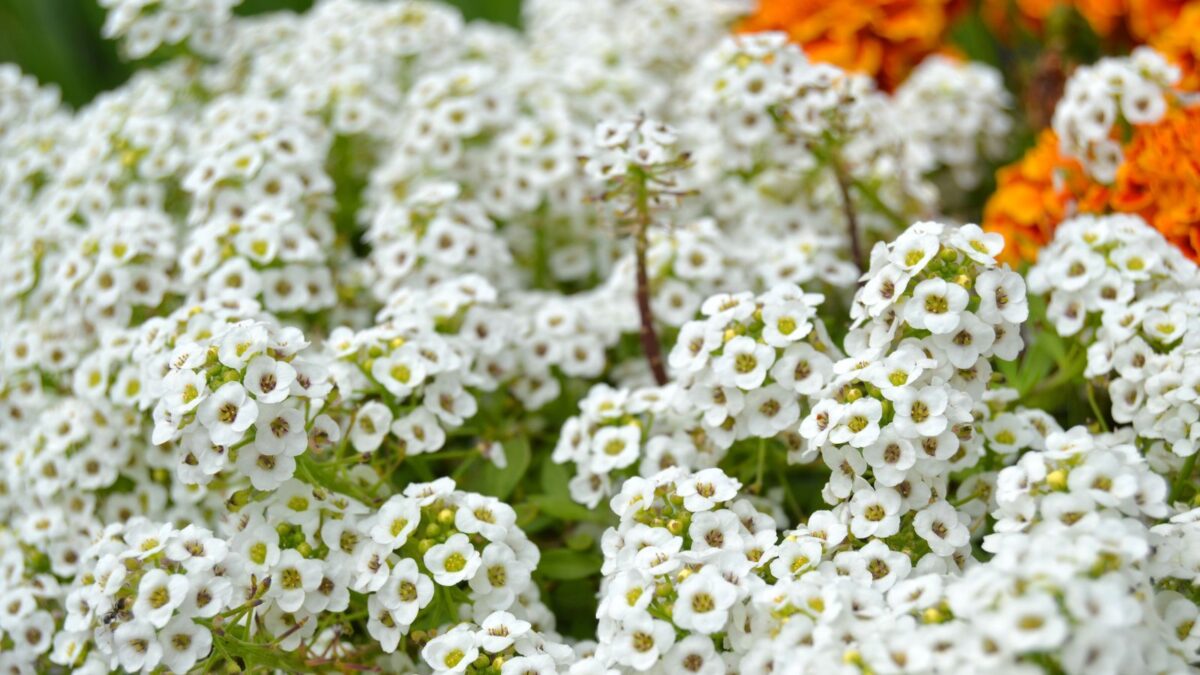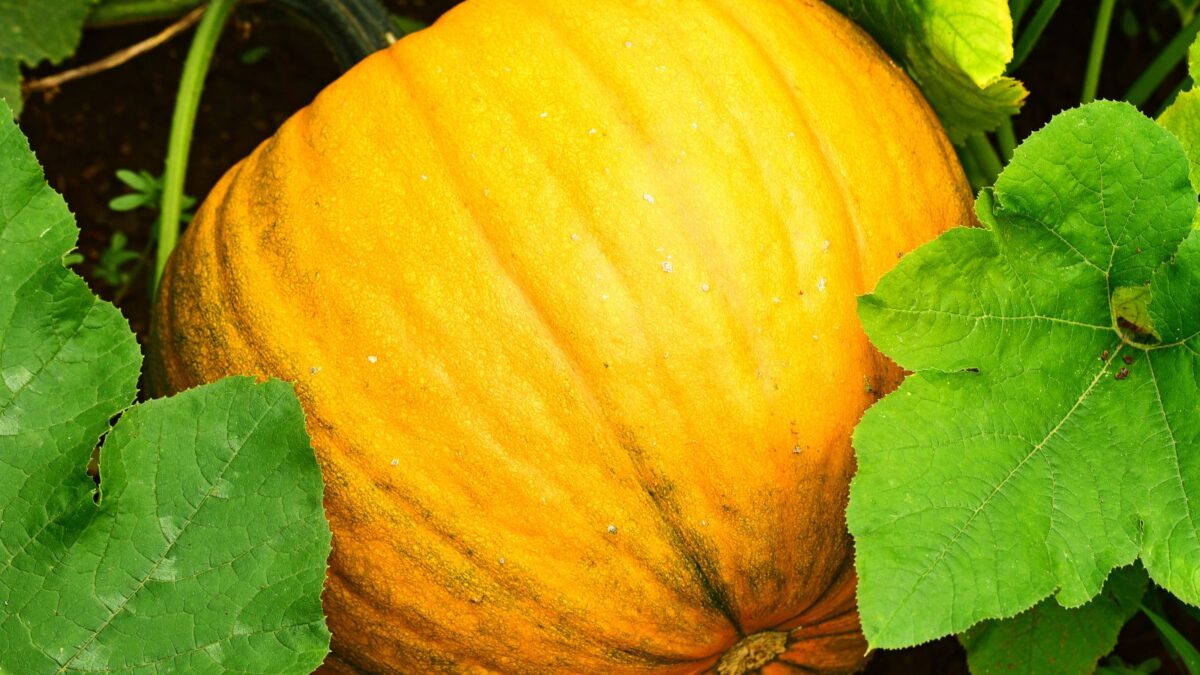Sweet potatoes are one of my favorite vegetables, both to eat and to grow. I’ve been toying with the idea of interplanting them with tomatoes next year to save space in the garden, but it turns out that might not be the best plan! Tomatoes are actually among the worst companion plants for sweet potatoes. Since I want to grow the biggest, healthiest crop of sweet potatoes possible, I need to interplant some of the best companion plants for sweet potatoes instead. These botanical friends help keep away pests, encourage beneficial insects to hang around, and improve the soil.

Best Companion Plants for Sweet Potatoes
These are the plants we should be growing alongside our sweet potatoes for the best possible crop.
1. Alliums

Garlic, onions, chives, and other alliums make excellent companions for many plants, including sweet potatoes. Pests ranging from aphids to rabbits find their pungent scent unpleasant, and alliums may even prevent root-knot nematodes.
When chives are allowed to flower, they also attract beneficial insects that feed on any pests not deterred by the odor. Plus, alliums have a small “footprint” with their narrow, upright foliage, making them easy to tuck in along the border of a bed where they won’t have to compete for space with sprawling sweet potato vines.
Learn more about growing allium vegetables.
2. Beans and peas

Beans and peas are famous for fixing nitrogen in the soil to make it more readily available for other plants to absorb. Nutrient-hungry root crops like sweet potatoes especially appreciate this boost. I like sowing a row of peas down the center of a bed in spring, then planting sweet potato slips on either side of them.
The peas succumb to the summer heat around the same time the sweet potato vines begin to take over. Pole beans could be grown concurrently with sweet potatoes, as the beans take up mostly vertical space while the sweet potatoes provide ground cover.
3. Beets

If like me you struggle with heavy clay soil, you may want to try growing other root crops before or alongside your sweet potatoes. Beets are a hardy cool-season root vegetable that can be planted in spring to help break up the soil before the sweet potato slips go in the ground. Plus, unlike many other direct-sown root crops, beets don’t have to be carefully thinned, as they will continue plumping up as the beets around them are harvested.
4. Carrots

Like beets, carrots can help break up compacted soil for improved sweet potato growth. However, many carrot varieties will form oddly shaped roots if the soil is not loose enough, so look for those that grow well in heavy clay soils, such as oxheart. These, too can be sown in spring to help loosen the soil before the sweet potatoes are planted, or they can be grown side-by-side.
Tips for growing delicious carrots.
5. Dill

If you choose only one companion plant for your sweet potatoes this season, dill might be it. Like other fragrant herbs, it repels insect pests with its scent. But when allowed to flower, dill also attracts many beneficial insects, like predatory wasps, hoverflies, and ladybugs.
Some growers claim that dill can even improve the growth of sweet potatoes. Its tall stems also means it won’t compete for space with sweet potato vines.
Tips for growing healthy dill.
6. Marigolds

My vegetable garden never feels complete without at least one bushy marigold. Not only do marigolds have striking ruffled blooms, beautiful feathery foliage, and a delightful spicy floral scent, but they’re also great companion plants. Their lovely fragrance deters many pests, and their bright blossoms attract beneficial insects. These classic annual flowers even do good work beneath the surface of the soil, defending against root-knot nematodes.
Check out these tips for growing marigolds.
7. Radishes

Radishes just might be my favorite vegetable to interplant! These little root vegetables are incredibly easy to grow, small enough to tuck into leftover spaces, and quick-maturing, so they can be harvested before nearby plants crowd them out.
Small round salad radishes, like cherry belle, make use of extra space around newly planted sweet potato slips in the spring and help keep the soil from crusting. Longer radishes, like daikon, help break up the soil much like beets and carrots do, making space for the sweet potatoes to plump up later.
Leave a few radishes in the ground and enjoy some radish seed pods.
8. Summer savory

If you struggle with sweet potato weevils in your garden, summer savory might be your new favorite herb. This annual deters sweet potato weevils — the most serious sweet potato pest in world — as well as other insect pests that might feed on sweet potatoes. And as with many herbs, summer savory also draws in predatory insects (and pollinators!) with its summer flowers.
9. Sweet alyssum

Though it might seem an odd thing to add to a vegetable garden, sweet alyssum is actually a wonderful companion plant. This low-growing ground cover produces a profusion of tiny white blooms that beneficial insects find irresistible. Plant some in the ends of your sweet potato beds or place a few pretty pots full of this fragrant flower nearby for a splendid mix of beauty and functionality.
10. Thyme

Fragrant herbs are great for repelling pests, and thyme is no exception. Thyme both repels harmful insects with its strong smell and attracts helpful insects with its flowers. Keep in mind, though, that this one is a perennial herb. While thyme won’t take over like mint will, you may want to have a designated spot for it so it can come back year after year, or plant it in containers that can be placed around the sweet potato bed.
11. Yarrow

Another perhaps surprising addition to the vegetable garden is yarrow. This beautiful plant has soft, feathery foliage and flat-topped clusters of flowers that attract hoverflies, lacewings, ladybugs, and other predatory insects we like to see working hard to keep our gardens free of pests. As with thyme, you will want to designate a corner of the garden to this perennial flower so it can come back every year and even spread out a bit.
Worst Companion Plants for Sweet Potatoes
One big thing to keep in mind when considering sweet potato companion plants is that sweet potato vines have a tendency to take over the entire bed, and then some! While most of the companions listed above can fit in well with the sprawling vines, other plants will compete for space and should be planted elsewhere. Additionally, some plants are susceptible to the same diseases as sweet potatoes. With these things in mind, here are three of the worst companions for sweet potatoes.
1. Squash

Summer squash, winter squash, and pumpkins all take up a lot of space, which means they will compete with sweet potatoes if planted too close together! The best way to ensure your squash and sweet potatoes both have plenty of room to sprawl is to plant them in separate beds.
2. Sunflowers

Though sunflowers take up very little horizontal space and thus would fit well planted sparsely in a sweet potato patch, they unfortunately can spread diseases to sweet potatoes. I like planting a row of sunflowers along the fence to encourage pollinators to visit the garden and provide a beautiful border.
3. Tomatoes

Remember my brilliant idea to save space by planting tomatoes in with my sweet potatoes? It’s actually not so brilliant. Tomatoes also share diseases with sweet potatoes, and indeterminate varieties can have some significant roots that might interfere with the growth of sweet potatoes.
Well, I won’t be interplanting tomatoes and sweet potatoes any time soon, but I have so many ideas for other plants to grow in my sweet potato beds now! I’ll certainly continue sowing peas and radishes in the sweet potato bed in early spring, and I might try adding some alliums or herbs a bit later. What combinations will you try?



